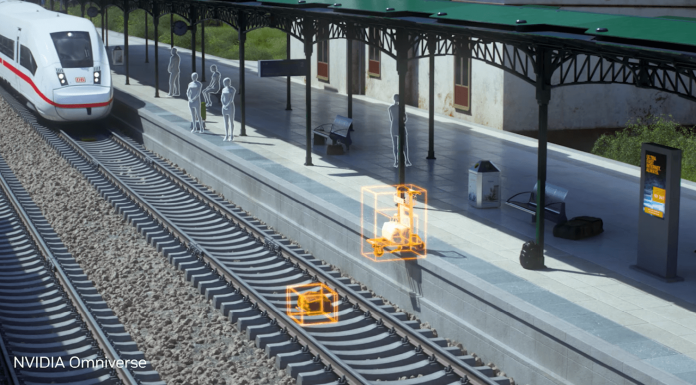Rail has many advantages over other means of transport, but digitization is now essential in view of its obsolete technologies and European requirements. To this end, the German rail network Deutsche Bahn has created Digitale Schiene Deutschland (DSD), a company responsible for the digitization of its network. In collaboration with NVIDIA, it has begun building a digital twin to simulate the automatic operation of trains throughout the German network. Deutsche Bahn's rail network is the largest in Western Europe, consisting of 5,700 stations and 33,000 kilometers of track. Optimizing this network is all the more important as Germany's geographical position makes it a transit country.
The DSD projects started in January 2020. They aim to renew control and safety technology by 2035, including the deployment of the European Train Control System (ETCS) and Digital Train Control Systems (DSTW).
The deployment of ETCS and DSTW enables the EU to create a seamless rail network. It offers greater reliability and capacity while reducing operating and maintenance costs: additional track construction can be reduced while increasing rail transport.
The starter package includes the Scandinavian-Mediterranean Trans-European Corridor, the Cologne-Rhine/Main high-speed line and the Stuttgart Digital Node, and is to be implemented by the end of 2030.
Creating the digital twin of the German rail network
The second stage of the DSD program aims to implement fully automated trains that follow each other more closely, intelligently and automatically controlled in real time, recognizing their environment and position with the help of sensors.To achieve these goals, DSD has created a digital twin with the NVIDIA Omniverse platform, based on Pixar's 3D USD (Universal Scene Description) and NVIDIA RTX technology, to improve the capacity, quality and efficiency of the network while reducing the carbon footprint.
With USD, DSD can connect and combine computer-aided design datasets into a single shared virtual model. This model runs on NVIDIA OVX, the computer system for running Omniverse simulations, and enables it to leverage persistent simulation, which is regularly enhanced by updates to the physical world data stream.
AI sensor models will be trained and optimized with a combination of real and synthetic data, some of which will be generated by the Omniverse Replicator software development kit framework. This will enable systems to perceive, plan and act whether they are faced with everyday or unexpected events.
In addition to contributing to the future of the European railway system and the development of the industry with this innovative approach to network optimization, DSD could thus achieve its goals of doubling its ridership and increasing freight traffic by 2030, enabling Germany to open up new markets and further establish itself as a technology leader.


